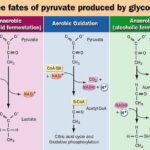AS and A Level Biology 36 Views 1 Answers
Sourav PanLv 9October 29, 2024
Explain how uncontrolled cell division can result in the formation of a tumour
Explain how uncontrolled cell division can result in the formation of a tumour
Please login to save the post
Please login to submit an answer.
Sourav PanLv 9May 15, 2025
Uncontrolled cell division occurs when cells divide and grow without the normal regulatory signals that keep cell proliferation in check. Here’s how this can lead to tumor formation:
- Loss of Regulatory Control: Under normal conditions, cells follow strict regulatory processes controlled by proteins and genes, including tumor suppressors (e.g., p53) and proto-oncogenes. These factors monitor cell growth, repair DNA damage, and trigger cell death (apoptosis) if necessary. Mutations in these regulatory genes can cause cells to bypass these controls, allowing them to divide unchecked.
- Accumulation of Mutations: If regulatory checkpoints fail, cells may continue dividing even with damaged DNA. This leads to an accumulation of genetic mutations, some of which may further enhance the cell’s ability to evade growth controls, creating a feedback loop of increasingly rapid division.
- Formation of a Mass: Uncontrolled division produces a mass of cells that accumulate to form a lump, or tumor. Unlike normal cells that adhere to growth limitations, these rapidly dividing cells ignore signals to stop growing, leading to an abnormal mass.
- Angiogenesis (Blood Supply to the Tumor): Some tumors can stimulate the growth of blood vessels (angiogenesis) to supply the mass with oxygen and nutrients, allowing it to grow even larger and potentially spread.
- Benign vs. Malignant Tumors: Tumors can be benign or malignant. Benign tumors remain localized and do not spread to other tissues. Malignant tumors (cancers), however, can invade surrounding tissues and spread to distant parts of the body (metastasis), making them far more dangerous.
0
0 likes
- Share on Facebook
- Share on Twitter
- Share on LinkedIn
0 found this helpful out of 0 votes
Helpful: 0%
Helpful: 0%
Was this page helpful?




